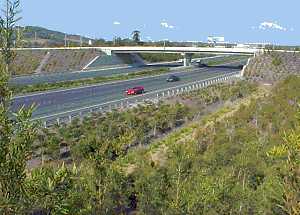Vegetation management
The department is committed to managing vegetation in the road corridor. Roads may impact directly on a vegetation community. Careful planning and design of roads will minimise the impact and optimise the rehabilitation of the area.
The department ensures that remnant vegetation on roadsides is protected and that activities affecting roadsides are controlled. The department is balancing road development and vegetation management. This is achieved by ensuring protection of rare and threatened species, prevention of further land degradation and use of best conservation practices in road planning and design. As a result visual amenity and landscape quality are maintained and enhanced. As roads dissect vegetation communities, it is important to manage the impacts of roads. Through appropriate planning, impacts on vegetation communities and conservation values are properly managed.
The Road Corridor Environmental Assessment (RCEA) is an important tool in vegetation management and through its continual development and implementation, impact will again be reduced.
Case study
The native grassland communities of the Darling Downs are ecologically significant and are predominantly contained in the road reserve. These communities support many rare and endangered species.
Through the department's construction and maintenance activities, it is often necessary to clear small areas of these communities. Environmental advice has concentrated on assessing areas to be disturbed and field trials, to improve rehabilitation and management, minimising losses.
Vegetation management gallery

Pacific Motorway, revegetation of disturbed areas.

Vegetation trials, harvesting of salt water couch. Site harvesting of couch was undertaken by stripping one third of the plants to allow for natural regrowth.
Site-harvested salt water couch is transplanted in areas in need of revegetation and improvement. After time, the vegetation has grown and covered the initially barren area.
- Last updated 24 August 2017

